Over half of urban residents in former Soviet countries live in microrayons — the large prefabricated housing estates that mainly lurk on the periphery of cities.
Irrespective of their prevalence, and the rapid changes that they are facing, there is a deficient amount of research on the districts in the architectural field.
Eager to spark a constructive dialogue on the topic, Berlin-based project ACT|UP is hoping to change this, fostering debates on the sustainability and revitalization of the estates.
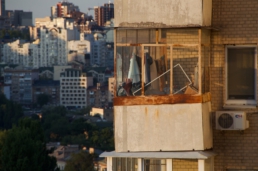
One of the project’s coordinators, Tinatin Gurgenidze, has been closely researching microdistricts over the last several years.
Her involvement in ACT|UP stems from the Tbilisi Architecture Biennial, which she co-founded, and hosted in a microdistrict called Gldani.
“These districts are undergoing polarizing and difficult development processes” she explains, “with their current decay and the simultaneous construction of new residential and commercial buildings, they face destructive and elitist densification.”
With urgent infrastructural issues ignored, and the threat of demolition constant, according to Tinatin, the topic of microdistricts and their future, remains largely shunned by politicians.
“Such trends have a serious negative impact on the residents’ quality of life. They endanger the social cohesion of the population and hinder sustainable urban development”, she maintains.
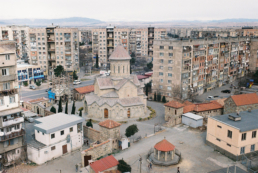
Microdistricts were originally built as a means of countering the post-war housing shortage, as well as to urbanise sparsely populated areas of the Soviet Union.
The flats became synonymous with Nikita Khrushchev, who rejected the classicalism of Stalinist architecture in favour of modern prefabricated designs that were cheap and fast to produce.
After the dissolution of the Soviet Union, many newly-independent countries privatized their housing stock, allowing tenants to become owners.
The state was no longer responsible for the maintenance of the apartments, and with economic hardship rife, many flats fell into disrepair.
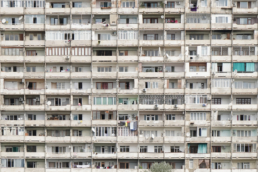
“The caretakers of the communal spaces in the apartment blocks disappeared, and these transitional spaces became greatly affected, as nobody feels responsible for taking care of them. Dark staircases, non-functioning elevators, and appropriated common patios, are just some of the results of privatization”, Tinatin observes.
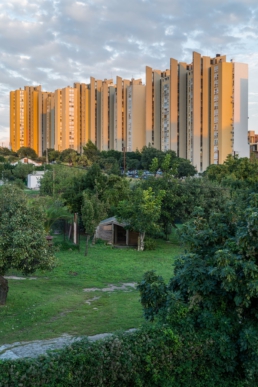
The prefabricated blocks built in Microrayons were only expected to last 50 years, and in places such as Moscow, efforts to demolish them are already underway. However, ACT|UP is encouraging the discussion of alternative scenarios. In July, the team hosted an online discussion about whether large housing estates should be listed as heritage.
“Of course when we look at those buildings today we see they are in a state of decay and aging, but it does not mean we need to take them down. I think it is still better to conserve and revitalize the buildings than to destroy them. Accepting them as heritage could do alot for these neighbourhoods”, Tinatin says.
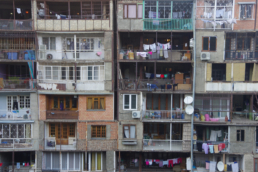
One thing that a heritage listing could bring is a standardisation that may curb the health and safety risks posed by ‘DIY’ approaches to construction and renovation.
Loggias, extended or newly collocated balconies, and appropriated communal patios and roofs are just some of the examples that are visible in cities like Tbilisi. In some cases, Soviet blocks have become entirely reshaped, losing their original façades as a result.
Tinatin is confident however that wider research on the topic would be beneficial in preserving the structures.
ACT|UP hopes to help facilitate this, offering advanced training on the revitalisation of peripheral large housing estates for urbanists and multipliers from Ukraine, Russia, Georgia and Belarus.
Recently, the project also hosted a photo competition in which contributors from all over the world submitted photos of Microrayons.
According to the architect, the long-ignored periphery is slowly garnering more attention.
“We are seeing more practitioners, researchers, and students studying these kind of neighborhoods. We need more knowledge about these places; we need to study them more in order to understand who really lives there and what these buildings really mean for the local residents.”